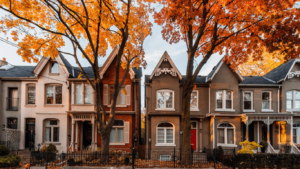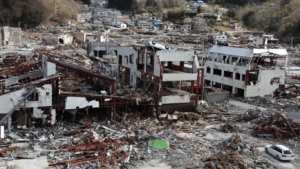
| The effectiveness of pre-construction termite treatment can vary, but it typically lasts around 5 to 10 years. |
One critical aspect that is often overlooked is the prevention of termite infestation. Termites can cause significant structural damage, leading to costly repairs. Implementing effective pre-construction termite treatments is a proactive approach to safeguard buildings from these destructive pests. This article delves into the various types of pre-construction termite treatments available, factors that affect their longevity, and the importance of maintenance and inspection to ensure lasting protection against termites. Understanding these aspects is crucial for builders, architects, and homeowners alike to ensure their properties’ structural integrity and longevity.
Liquid Termiticides
Liquid termiticides are a popular choice for pre-construction termite treatment. These chemicals are applied to the soil around and under the foundation of a building to create a barrier that termites cannot penetrate. Common chemicals used include bifenthrin, fipronil, and imidacloprid. When applied correctly, liquid termiticides can provide a long-lasting barrier, often effective for 5 to 10 years. The effectiveness depends on the thoroughness of the application and the type of chemical used. This method is favoured for its long-term protection and reliability.
Bait Systems
Bait systems, though more commonly used for post-construction termite control, can also be part of a pre-construction strategy. This method involves installing bait stations around the construction site to detect and control termite activity. The termites are attracted to the bait and then carry the toxicant back to their colony, effectively reducing the population. Bait systems are less about creating a physical barrier and more about ongoing monitoring and management of termite populations. They require regular maintenance and monitoring to be effective.
Physical Barriers
Physical barriers are a non-chemical option for pre-construction termite treatment. These barriers consist of materials like stainless steel mesh or specially treated fabrics that are installed in potential entry points for termites, such as the foundation or between the soil and wooden elements of the structure. Physical barriers are designed to be a long-lasting solution, as they do not degrade over time. They can be particularly effective in conjunction with chemical treatments, providing an additional layer of protection against termites. These barriers are an excellent choice for those looking for a more environmentally friendly option.
| Did you know? Termites Lived 130 Million Years Ago and Have Cockroach-Like Ancestors: Fossil records show the earliest termite specimen dates back to the Cretaceous period. |
Factors Affecting Longevity
Quality of Chemicals
The longevity of pre-construction termite treatments is heavily influenced by the quality of the chemicals used. High-quality termiticides are formulated to last longer and provide more effective protection against termites. In contrast, lower-quality chemicals may not be as effective and could degrade more quickly, necessitating more frequent reapplications. Premium termiticides often come with longer warranty periods and are trusted for their sustained effectiveness under various soil conditions.
Application Method
The method of application plays a crucial role in determining how long a termite treatment will last. Proper application ensures that the termiticide forms a continuous, unbroken barrier around and under the structure. This involves correctly mixing the chemicals, applying them at the right depth, and ensuring thorough coverage. Inadequate or incorrect application can lead to gaps in the termite barrier, reducing its effectiveness and lifespan. Professional application by experienced pest control specialists is recommended to maximize the treatment’s longevity.
Soil Type and Condition
Soil type and condition can significantly affect the durability of termite treatments. Different soil types, such as sandy, loamy, or clay soils, absorb and retain chemicals differently. For example, sandy soils may allow for quicker chemical degradation, while clay soils might hold onto the chemicals longer. Additionally, the condition of the soil, such as its moisture content, pH level, and organic matter content, can also influence how long the treatment remains effective. Regular soil assessments can help determine the need for reapplication of treatments.
Environmental Factors
Environmental factors such as weather conditions, landscaping changes, and construction activities can impact the longevity of termite treatments. Heavy rainfall, flooding, or excessive irrigation can dilute or wash away termiticides, reducing their effectiveness. Similarly, landscaping activities like digging, grading, or planting near the treated area can disturb the chemical barrier. In areas with high environmental stress, more frequent inspections and potential reapplications of termite treatments may be necessary to ensure ongoing protection.

Expected Longevity
The expected longevity of pre-construction termite treatments largely depends on the type of treatment and environmental conditions. For liquid termiticides, which are the most common form of treatment, the protection can last anywhere from 5 to 10 years. This duration is influenced by the quality of the chemicals used and the method of application. Bait systems, while more commonly used for ongoing termite management rather than long-term prevention, require regular monitoring and replenishment, making their effectiveness continuous but dependent on maintenance.
Physical barriers, on the other hand, tend to have a longer lifespan since they do not degrade over time like chemical treatments. However, their effectiveness can be compromised if disturbed during subsequent construction or landscaping activities. It’s important to note that environmental factors such as soil type, weather conditions, and landscaping changes can also impact the longevity of these treatments, necessitating regular inspections and potential reapplications.
Maintenance and Inspection
Annual Inspections
Regular inspections play a crucial role in maintaining the effectiveness of pre-construction termite treatments. It is recommended to conduct professional inspections at least once a year. These inspections are designed to identify any signs of termite activity, breaches in the chemical barrier, or conditions conducive to termite infestation. Early detection through annual inspections can prevent significant damage and ensure that the termite protection remains effective.
| Did you know? Residential building construction costs increased 1.0% in the third quarter, following a 2.0% increase in the previous quarter. |
Reapplication
The need for reapplication of termite treatments depends on the initial treatment type and the environmental conditions of the area. Liquid termiticides, for example, may require reapplication after 5 to 10 years, depending on their longevity and the factors affecting it. Reapplication is essential to maintain an uninterrupted barrier against termites. It should be done professionally, considering the latest advancements in termite treatment technologies and environmental safety standards.
Environmental Management
Managing the environment around the structure is key to prolonging the effectiveness of termite treatments. This includes maintaining proper drainage to prevent water accumulation near the foundation, which can dilute chemical barriers. Landscaping practices should avoid disturbing treated soil and should be planned to minimize wood-to-soil contact. Additionally, reducing moisture-rich environments and wood debris near the structure can help deter termite infestations. Adhering to these environmental management practices can significantly contribute to the long-term success of pre-construction termite treatments.
Conclusion
Implementing effective pre-construction termite treatments is vital in safeguarding buildings from the potentially devastating effects of termite infestation. By choosing the appropriate treatment method—be it liquid termiticides, bait systems, or physical barriers—and paying attention to the factors that affect their longevity, builders and property owners can significantly enhance the durability and effectiveness of these preventive measures.
Regular maintenance, including annual inspections and timely reapplications, coupled with conscientious environmental management, is key to ensuring these treatments provide the necessary protection over time. Ultimately, the diligent application of these strategies will prevent termite damage and preserve the structural integrity and value of properties for the long term.





